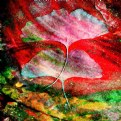| Photography Forum: Darkroom Techniques Forum: |
 |
Q. Recommend a book on learning to develop film

Asked by Michelle Bekkering
(K=250) on 5/3/2002
|
Hello:
I'm interested in learning to develop my own b&w film. Unfortunately, there seems to be no one in my city teaching it so I'm on my own... To get started, I was hoping someone could recommend a good (easy to understand) book that could explain the technique. As well, where do you develop your film? Although I do have room for a darkroom in my basement, I've read about people developing film in their darkened bathrooms, etc.
Thanks for any help you can provide.
Michelle
|
|
|
|
|
|
|

Nigel Smith
(K=3834) - Comment Date 5/3/2002
|
there's an detailed article here on usefilm (http://www.usefilm.com/articles/filmdeveloping/index.php) but if you want a book, there's a Kodak one (Intro to the Darkroom or something like that) which is a good beginners guide (covers basic printing too). Film developing is fairly straight forward (Nanettes explanation is a lot more in depth than the Kodak book!), which if you pay attention to what you're doing rather than going off and doing other things at the same time, is fairly hard to stuff up!
a quick summary...
1. Load film into development tank (in the dark)
2. Mix up developer to recommended dilution and temperture
3. Mix Stop Bath (or have some water ready) and Fixer to recommended dilutions
4. Pour developer into tank and agitate for 20secs. If tank has a lid, put that on and agitate by inverting.
5. Agitate tank on recommended schedule (either every 30secs or 1min usually) Don't shake it like a martini!
6. Once time is up, pour developer out, stop (or water) in. Agitate gently and pour out (save the stop, dump water)
7. Pour in the fix. Agitate each minute for the recommended time plus a bit.
8. Pour fix out (keep it for other films), rinse with water the same temp as chemicals. Open tanl and check the film base is clear. If it's milky, it needs more fixing (if you;re reusing old fixer, mix up some new stuff)
9. Give film a final rinse in distilled water with a drop or two of photo flo/etc
10. Hang film up in dust free area (showers are good) and let dry.
|
|
|
|

Nigel Smith
(K=3834) - Comment Date 5/3/2002
|
ohh forgot to add, when timing the development step, don't worry whether to include the time to pour the liquid in and out of the tank, just be consistant which ever way you decide.
|
|
|
|

gerard welford
(K=648) - Comment Date 5/3/2002
|
Although I do have room for a darkroom in my basement, I've read about people developing film in their darkened bathrooms, etc.
You only need to be in complete darkness to load the film into the developing tank. Once the film is in the tank and the lid securely closed you can do all the rest in daylight.
Good luck......Gerard
|
|
|
|

Michelle Bekkering
(K=250) - Comment Date 5/6/2002
|
Thank you both for your help. The usefilm article is fabulous and it is better written (easier to understand) than most books I've found. I'm looking forward to trying processing... should be fun.
Michelle
|
|
|
|

David Holowiski
(K=30) - Comment Date 5/13/2002
|
This message is getting kind of old, so you've probably already figured out how to develop film, but if you haven't, try the book: The Basic Darkroom Book by Tom Grimm
http://www.amazon.com/exec/obidos/ASIN/0452274362/qid=1021328521/sr=8-1/ref=sr_8_67_1/102-1270670-2559305
It's what I bought & it is great. It explains how to do everything: b&w film & prints, even color film & prints. Then I read the article on usefilm.com, then I got the specific developing times for my film of the Kodak web site & have sucsesfully developed 10+ rolls of film.
|
|
|
|

Richard Lee
(K=317) - Comment Date 5/16/2002
|
Michelle, there are some things you need to know about developing in a tank. There are two types of tanks, Stainless steel and plastic, the stainless tanks although they are very durable are harder to use than the plastic ones because you have to put the film under a catch and then wind it on. this can be extremley dificult in total darkness. the plastic tanks are desighned to let you start the film onto the outside of the film reel and just rachet the film in. neither one works better than the other although the plastic ones by opening the reel you can develop 120 without having to spend any more money. I use the plastic one almost excusivley because it is so much easier. Yes you can develop film in your bathroom. go in, close the door, wedge a towel under the door and sit in there for 3-5 min. if when facing away from the door you cannot see your hand in front of your face, your bathroom is dark enough, if you can you will need to hang a blanket infront of the door before you open the film canister. One other thing you may want to do is to by a roll of film, and waste it. pull it out and practice loading the film onto the cansiter until you can do it with your eyes closed. then you can go into the dark and load your film with confidence that your not going to ruin the film you just exposed. if you have trouble, don't panic just keep trying, it took me 25 min. to load my first roll of film. have fun with it!!
|
|
|
|

Tony Cifani
(K=66) - Comment Date 5/21/2002
|
Please see the Ansel Adams series of technical books for exhaustive details about printing and processing, The Camera, The Negative, and The Print.
The Negative, in particular, presents a terrific amount of information about processing black and white film.
|
|
|
|
|
















